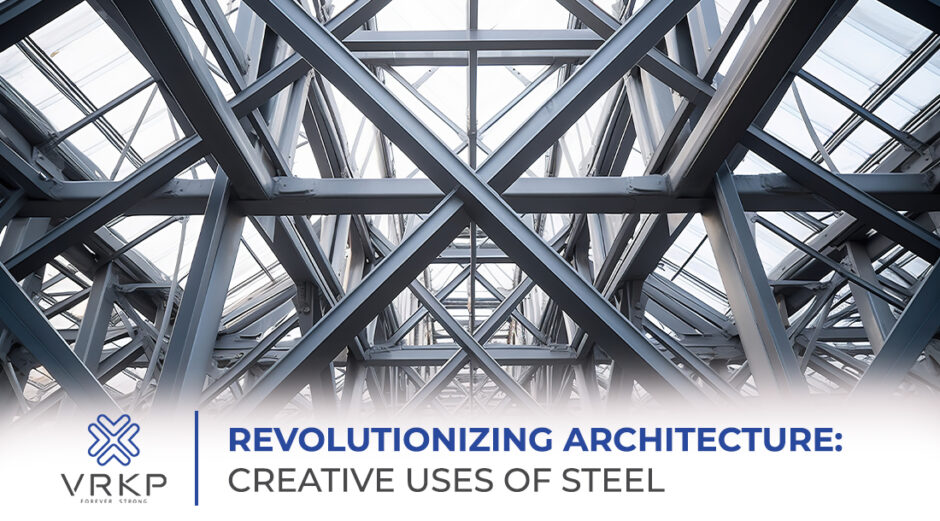Revolutionizing Architecture: Creative Uses of Steel
A world where steel defies conventional boundaries and revolutionizes the field of architecture, forges new possibilities, and push the boundaries of what is possible. In this blog, we will explore the creative uses of steel in architecture, highlighting its advantages, as well as the various types of steel used in building construction. Additionally, we will delve into the sustainable and structural efficiency of steel and its versatile applications, including the uses of stainless steel.
Sustainability and Structural Efficiency
One of the most notable advantages of steel in architecture is its sustainability and structural efficiency. Steel is not only 100% recyclable but also boasts a significantly lower carbon footprint compared to other construction materials. Its strength-to-weight ratio ensures architects can design sleek and light structures without compromising safety or integrity. From high-rise buildings to bridges, the types of steel used in building construction provide the necessary strength and durability to withstand various loads and extreme weather conditions. This combination of sustainability and structural efficiency makes steel a top choice in the industry.
Technology Innovations and Advancement
Advancements in technology have further enhanced the creative uses of steel in architecture. Architects now have access to advanced computer-aided design (CAD) software and Building Information Modeling (BIM), enabling them to visualize and simulate complex steel structures. This optimization of designs ensures both aesthetic appeal and functionality. Moreover, technological innovations such as 3D printing and robotic welding have streamlined the manufacturing process, resulting in precision-engineered steel components and faster construction timelines. These advancements place steel at the forefront of architectural innovation.
Application of Steel in Various Industries: Stainless Steel Uses
Stainless steel offers numerous uses due to its corrosion resistance and aesthetic appeal. It is commonly found in kitchen fixtures, medical equipment, and even artistic sculptures. In architecture, stainless steel is favored for its durability and contemporary aesthetic, making it suitable for cladding, handrails, and other decorative applications.
Steel is a material that seamlessly integrates technology innovations, enabling architects to push boundaries and create visionary structures. Additionally everyday uses of steel make it a preferred choice for functional applications and its versatility to the charm of architectural designs. Made of great metal, indeed!
For more enlightening insights into the world of steel and its profound impact on architecture, stay tuned to https://vrkp.in/blog/

